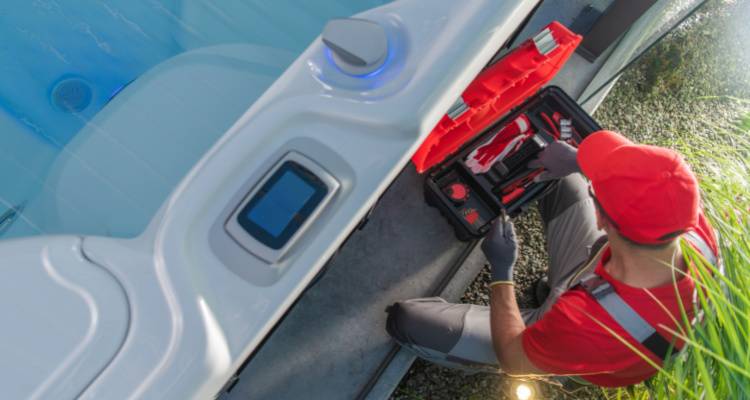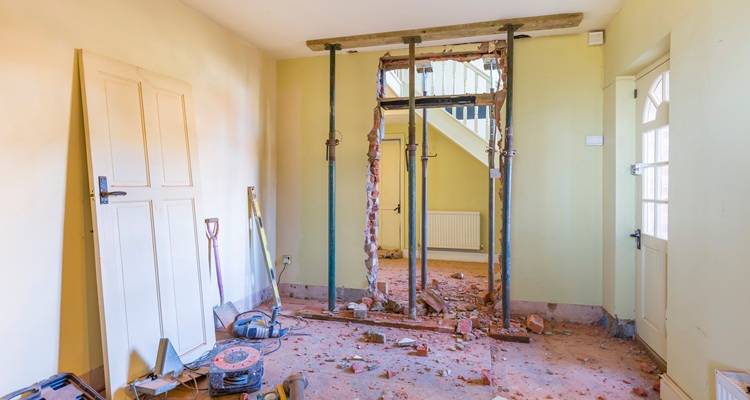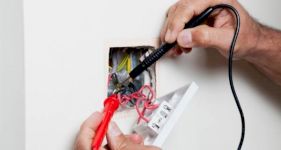How to Build a Home Observatory in your Garden
In this article, we will investigate what is involved in building a home observatory. This will be helpful if you are an amateur astronomer or someone with an interest in building an observatory at home. Throughout our guide to building a home observatory, we will look at the requirements for constructing one and answer common questions – like whether you'll need planning permission.

What is an Observatory?
In this section, we will look at what an observatory is. We will also discuss its potential uses.
An astronomical observatory is any structure which features a telescope and other equipment used to observe celestial bodies. Individuals with an observatory may use it for reasons of simple enjoyment or for more professional purposes such as recording data in relation to objects in space. In some cases, astronomers utilise observatories to make new discoveries. As an example, several observatories in coordination were used to capture the first image of a black hole in 2019.
Benefits to a Home Observatory

There are many benefits to having a home observatory, which we will discuss in this section.
Protection from the Elements
A home observatory can protect you and your instruments from the wind, rain and cold. This will be beneficial for you as it will offer a more comfortable experience when using your telescope. For your equipment, it will protect against or at least reduce rain, sleet or snow which is important for both observational quality and the longevity of your instruments. A home observatory will also protect against the wind that may shake your telescope which would make it difficult to observe the heavens on some nights. Other aspects to this benefit include protecting you and your instruments from weather extremes.
Permanent Set-Up
Having a home observatory will allow you to have a continuous set-up that you can leave in place and return to when you wish. The main benefits of this are that it saves time and is more convenient. A permanent set-up will make it easier to go back to your telescope time and again since preparing your equipment for observation will be relatively easy.
Privacy
Having a home observatory will also offer privacy. A home observatory means that you can relax in a private environment that also allows you to be indoors.
Reduces Extraneous Lights
Your home observatory can help with blocking or reducing lights such as those in close proximity to your observation structure. Home observatories can also be fitted with portable light-blocking panels. Such features will improve the visual quality of the objects you are observing.
What Does a Home Observatory Require?
There are many essentials to building a home observatory. Necessary considerations for your home observatory include planning, location, warmth, material, security and that it's weatherproof. For this section, we will discuss these requirements in more detail. If you want to build a home observatory, important points to consider include whether you have adequate space to build one, how much it might cost and where exactly it would be located.
Planning

In this subsection, we will look at what planning your home observatory entails.
Depending on the size and complexity of your home observatory, you may need to draw up a design, specifying each part, the materials necessary and its dimensions. You can purchase home observatory kits which come with the materials and instructions already prepared for you. Sites where you can make such purchases include Home Observatory UK. There are also detailed descriptions online on how to build a DIY home observatory.
If you feel sufficiently confident then you might choose to draw up your very own tailor-made design. To improve your knowledge of elementary construction planning, use online resources such as those available through Smart Sheet.
Location of Home Observatory

Finding the ideal location for your home observatory will give you the best opportunities to stargaze in terms of privacy, what you'll be able to observe as well as the visual quality of your observations. For this subsection, we will discuss the importance of finding a good location for your home observatory.
Picking the right spot for your observatory involves finding a location that is quiet but accessible, that is not obstructed by anything and somewhere which will be safe and easy to maintain in the long-term.
Other considerations include whether the observatory will be positioned so that you can get the best view. What the ideal view is for a given astronomer might depend on what specific celestial objects they would like to observe and at roughly what times of the night or/and year.
To take this into account you'll need to look at sky maps. Some great locations for a home observatory are a back garden or by utilising an attic. A room downstairs is not likely to be preferable. A front garden is unlikely to be a good location either unless you have a sizable front garden and little to no light pollution (such as in a rural area) and that there are no obstacles out the front that would obstruct your viewing capacity.
Weatherproof

In this subsection, we will look at why a home observatory must be waterproof, what you might need to achieve this and how you can ensure that your observatory is protected from the elements.
It's important that your home observatory is waterproof because with a permanent set-up, frequent exposure to the rain and occasionally other forms of precipitation will damage and erode your instruments as well as the inside of the observatory itself. The best solution to the threat of rain is to protect your observatory with a waterproof cover when it's not in use. Using materials that are waterproof or/and hardy will also help to protect against the elements.
Warmth

For this subsection, we will discuss the importance of warmth for a home observatory.
It's important to maintain consistent warmth for the instruments inside your home observatory as a failure to do so will expose them to significant temperature fluctuations between day and night as well as with seasonal changes throughout the year. Keeping your telescope and other astronomical instruments warm will be important at night and over a longer timeframe as prolonged exposure to the cold on many nights could prove harmful. Installing correct levels of insulation through the construction of your home observatory is a great way to achieve this.
Material
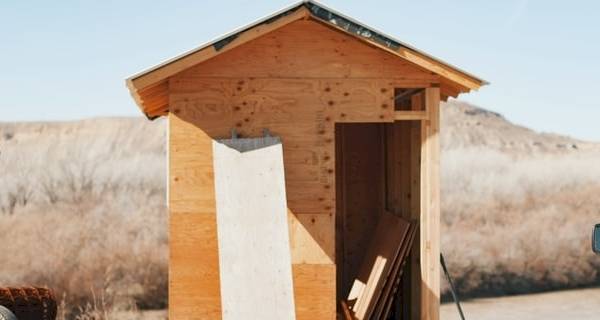
Another important step in planning a home observatory is choosing the correct materials. In this subsection, we will discuss what materials you should use and how this can affect the quality of your observations.
Do not use concrete blocks or bricks for building your home observatory since they will soak up heat throughout the day and radiate it out at night which will negatively affect the quality of your observations. Instead, you should construct a wooden home observatory. Ideally, a wooden home observatory works best in a grass-filled garden. You might also want to include insulation material in your construction plans.
Security

In this subsection, we will discuss keeping your observatory secure.
A simple padlock should suffice in the style of a shed door lock. You might also choose to avail of an insurance policy and a small fence around the perimeter of your home observatory. Another way to increase security would be to set it up in a location that makes its visibility minimal to those outside your home. It's important to keep your home observatory secure in case of thieves. Another concern is wildlife who might be seeking a warm environment to live or hibernate in.
Types of Observatories
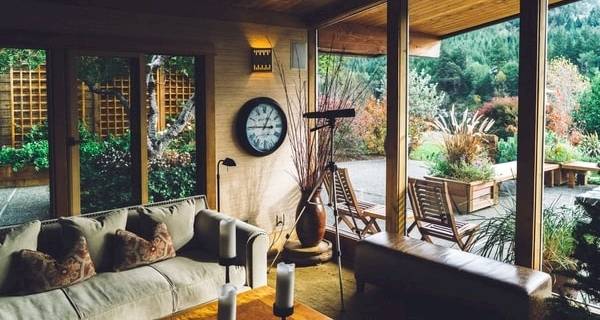
For this section, we will explore different types of home observatory designs. We will discuss these observatory types in detail, compare and contrast and list out their pros and cons.
For more information on a rolling roof and dome observatory, you might want to consider purchasing the book Building a Roll-Off Roof or Dome Observatory: A Complete Guide for Design and Construction by John Stephen Hicks.
Rolling Roof
A rolling roof or roll-off roof observatory is an observational structure which is designed to allow the roof to slide off before an astronomer commences their observations. What distinguishes a rolling roof from a dome roofed observatory is, of course, the roll-off roof feature but also that it allows for a greater viewing range.
A rolling roof observatory will also probably be cheaper, depending on where you're buying it from or/and what materials you are using if it's a DIY home observatory. One option for a rolling roof observatory is to convert your shed into an astronomy shed for this purpose.
Advantages
- Increased viewing range at any given time.
- Likely to allow for more than one telescope pier to be used at any given time.
- Probably more affordable.
Disadvantages
- More vulnerable to stray wind and light.
- More susceptible to the elements when in use.
Dome Roof
A dome roof structure is shaped like a conventional observatory and probably what you would picture when imagining an observatory. It has a relatively small opening at the top which can be opened and closed depending on whether your observatory is in use. A dome roof is better able to minimise stray light and wind, but it also has a significant limit in what you can view at any one time.
Advantages
- Reduces stray light and wind.
- Better protects against the elements.
- More effective at protecting against dew.
Disadvantages
- Likely to cost more.
- Minimal viewing range at any one time.
- Limited to one telescope pier.
Roll-Away
Another, less common observational structure is a roll-away home observatory. Similar to a rolling roof observatory, this type allows for the entire structure to roll-away. This form of home observatory is a bit more complicated than a rolling roof or dome observatory, but it has the best viewing capacity and is less limited in terms of how many telescope piers could be put to use at any one time than with a domed roof observatory. Another difference to a roll-away observatory is that it features wheels and rails on the floor allowing the entire structure to move.
Advantages
- Allows for the highest viewing capacity out of all three telescopes.
- Allows for more telescope piers than a dome room observatory.
Disadvantages
- More complicated to construct.
- Probably going to cost more than a rolling roof observatory.
Home Observatory Extras
For this section we will look at additions to your home observatory you might consider. We will look at possible extras such as an electric roof, windows and a storage side pod.
Electric Roof
An electric roof will be applicable if you choose to buy or make a rolling roof observatory. Some vendors provide electric roof home observatories. Often you will need to make a specific enquiry regarding such a project as is the case with Outsideology. If you wish to install an electric roof for a DIY home observatory, you should hire an electrician for safety reasons, and you should ensure that all legal and safety requirements are met.
Windows
Windows can be a pleasant addition for a home observatory. The primary purpose of including windows is for comfort and aesthetics as without them you may feel too enclosed.
Flooring
You might choose to use flooring alternate to basic wooden flooring. Alternative flooring includes laminate flooring, tiles and carpet. Optimal flooring can help to keep the heat in (particularly carpet) and make for a comfier environment for you the astronomer. Astroturf could also provide comfortable flooring.
Side Pod for Storage
A small storage side pod could be helpful to keep additional equipment and instruments. This might include telescope lenses, filters and cameras.
Small Table
You might also want a space to fit a small table and chair in your home observatory. This could be helpful for reading star maps, detailing your observations and for writing up other content related to astronomy.
Will I Need Planning Permission for Building an Observatory?

In this section, we will analyse whether you'll need planning permission to build your home observatory.
This will primarily depend on factors such as which location you intend to use and what dimensions your observatory will have. If you plan to locate your observatory out the front, such as in your front garden, then you will need planning permission. If you intend to convert your attic into an observatory, such as by creating a rolling roof observatory then you should not need any planning permission.
This is so long as you are not adding height to the roof. If you want to build your observatory on top of a room or garage, then you will need permission. Most observatory designs will fall under a rule limiting them to 3 metres in height.
Ultimately, it depends on various different factors and your local council may have specific rules which don't apply nationwide. For more details, visit outsideology's article regarding planning permission for observatories. If you have any uncertainties, you should contact the local council.
Will I Need to Follow Building Regulations for a Home Observatory?
For this section, we will consider what building regulations an amateur astronomer might need to follow in constructing a home observatory.
Generally, a home observatory should be exempt from most building regulations. Under UK regulations, a home observatory would be considered an ancillary building which is exempt from most building regulations.
If you are using electrics however then you will need to follow Part P of the regulations relating to electrical safety. Rules regarding the conservation of fuel and energy (Part L of the regulations) also apply. While it won't be particularly relevant in practice, you should still read Part L of UK building regulations in full before planning a home observatory. A full list of UK building regulations is available on the website Home Building. Remember most of the regulations will not apply nor be relevant to a home observatory. You should contact your local council if you have any uncertainties.
Alternatives to a Home Observatory
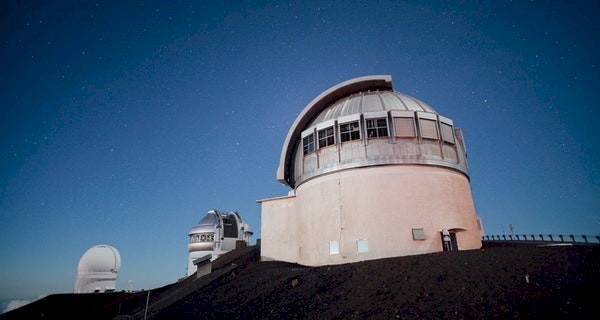
If you are unsure about building a home observatory, there are several alternatives you could consider.
Purchase a Telescope
If you are delving into a practical interest in astronomy for the first time, then you may not have a telescope. If a home observatory seems like too much work, too costly or that it's too soon, simply purchasing an appropriate telescope for your needs is a good alternative. There are various online stores which sell telescopes including Harrison Telescopes Ltd and Telescope House.
Advantages
- More affordable and easier to obtain.
- Also, easier to manage.
Disadvantages
- You'll need to keep bringing it outside when you want to observe.
- You will not be protected from the elements such as the wind.
- You will lack the benefits of an observatory such as their ability to reduce stray light.
Rent a Telescope
Another option is to simply rent a telescope. Whether you want to rent a low-budget telescope or a top-of-the-range telescope, this could be relevant if you are uncertain about how much you want to commit to astronomy. Telescope rental services in the UK include Dark Sky Telescope Hire. You might also be interested in holiday rental telescopes. This involves taking a holiday where you stay at locations such as a B&B and gain access to telescopes. The website Star-Gazing provides details regarding astronomy holidays in the UK.
Advantages
- A cheaper option in the short-term.
- Great for astronomy for beginners.
- Not as much of a commitment.
- Allows you time to figure out how far you want to take your astronomical endeavour.
Disadvantages
- You will only have access to telescopes for specific allocated time.
- It may be more costly in the long run especially if you continue to rent telescopes for years rather than buy one.
Use an Internet Remote Telescope
Another alternative is to take advantage of an internet remote telescope service. The website iTelescope as an example allows users to book time slots so that they can remotely control a telescope and capture astronomical images. The site offers different membership plans with prices ranging from £14.95 (for roughly 1 hour of imaging time) to £760.95 (which will get you about 30.5 hours of imaging time). Similar services are offered by Telescope.org and Insight Observatory.
Advantages
- Good way to dip your feet in the water if new to astronomy.
- Offers access to very high-quality telescopes.
Disadvantages
- Only allows for remote access.
- Quite costly, especially if you want to use a service like this frequently.
- Not ideal if you want plenty of observation time.
FAQ
Who built the first observatory?
The first notable observatory prior to the scientific revolution was built by the Danish King Frederick II in 1576. However, it has been argued that the first observatory was actually built by ancient Greek astronomer Hipparchus on the island of Rhodes in 150 BCE.
Who invented the telescope?
A Dutch man by the name of Hans Lippershey is credited by many with inventing the telescope in 1608. Although others contribute the invention to Galileo who built his first telescope around the same time.
What is astronomy?
Astronomy is the scientific study and observation of celestial objects and phenomena.
How can I locate a celestial object?
By using a star map you will be able to locate specific objects in the sky. An app like Sky Map could also prove helpful.
What is the largest optical telescope in the world?
The largest out of astronomy telescopes on Earth by certain measurements is the Large Binocular Telescope, located in Mount Graham, Arizona. However, the Gran Telescopio Canarias in the Canary Islands is the largest optical single-aperture telescope.
Sources
https://www.britannica.com/science/astronomical-observatory
https://link.springer.com/chapter/10.1007/978-1-4939-3011-1_1
https://www.instructables.com/id/A-Tiny-Telescope-Observatory/
http://arnholm.org/astro/observatory/index.htm
https://stargazerslounge.com/topic/291813-roll-away-observatory-plan/
https://www.homebuilding.co.uk/building-regulations/
https://www.planningportal.co.uk/info/200187/your_responsibilities/38/building_regulations/2
https://www.space.com/21950-who-invented-the-telescope.html
https://www.britannica.com/science/astronomy
https://www.worldatlas.com/articles/the-biggest-telescopes-in-the-world.html
Last updated by MyJobQuote on 7th July 2020.
